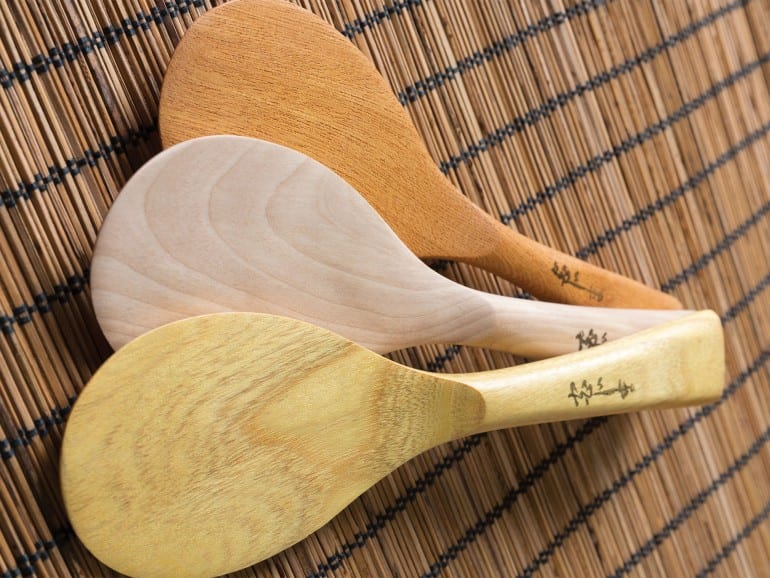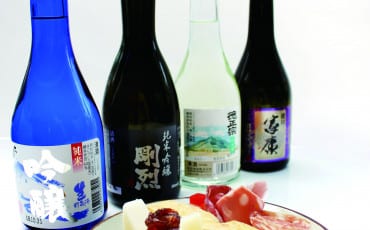- OISHII
- OISHII Wiki
- Tools
- Shamoji
OISHII Wiki
Tools
Shamoji
It’s not just a spoon – this handy addition to every Japanese household (or any household with a rice cooker) is truly an essential.

When we think about rice and all its wonders, we sometimes overlook the humble Shamoji (rice paddle or scoop). In Japanese culture particularly, the Shamoji plays an important part of the rice-cooking process and has its own history.
It all started sometime between 1790s and the 1800s when a Buddhist monk named Seishin had a dream of a deity named Benzaiten, also known as the Indian goddess Saraswati. In the dream, she held a traditional Japanese lute, which the monk interpreted as a spoon. When he awoke, he showed the people of Miyajima how to make this special rice scoop, or Shamoji. In those early days, the Shamoji was given out as talismans by nearby Shinto shrines, and while the modern version may not have the same symbolism, some families still keep the traditional one in the home.
The theory behind the Shamoji is that rice should always be mixed right after itfs finished cooking, but before being served out for the meal. This allows excess moisture to escape and helps create the right consistency for the rice.
This is where the Shamoji does its job perfectly – you donft want something too sharp to risk cutting and mashing the rice, but still solid enough to be able to mix it up properly. This is why Shamoji are typically made of wood, bamboo or plastic. Most new rice cookers come with a plain white plastic one. Youfll never find a metal Shamoji as the material may cut the rice and damage the hangiri (wooden Sushi rice-mixing tub). Shamoji is also frequently used in food preparation to help crush vegetables such as garlic and cucumbers.
As Japanese rice tends to be more glutinous and sticky, some newfangled Shamoji are coated with a non-stick material, while others sport tiny ridges on its scoop to help prevent rice from sticking to it. A more traditional way of getting around this problem was simply to put the Shamoji in some water each time before using it.
The Giant Shamoji
The world’s largest wooden rice scoop in the world is 7.7 metres long, 2.7 metres thick, and weighs 2.5 tonnes. It’s said to be made from a 270 year-old Zelkova tree.
It took more than three years to construct, and you can find it in the Omotesando shopping street in Miyajima, Hiroshima prefecture.
(Text Deborah TaN)









